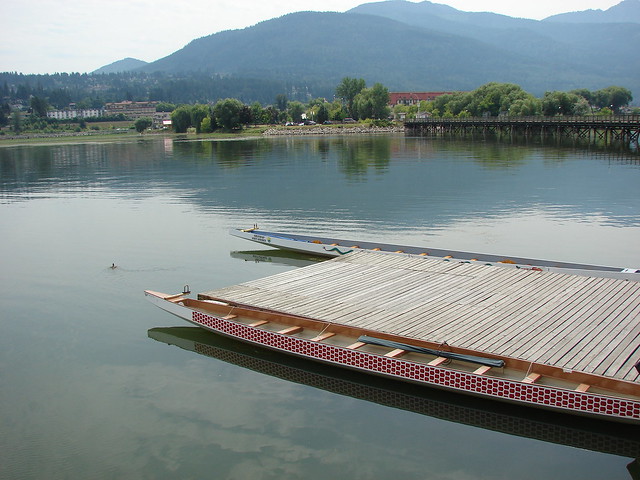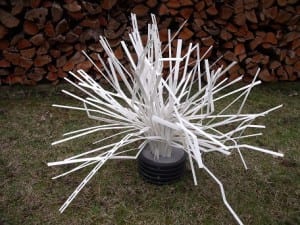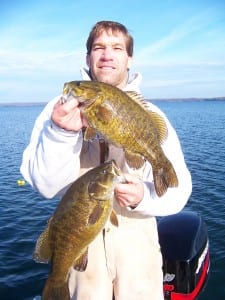Wildlands Conservancy helps return waterway in oft-overlooked downtown park to health.
 (from left) Billy Hazlet, 20, Amber Troxell, 20, and Tommy Howard, 19, all of Allentown, workers for Allentown’s “stream team” use brush cutters to cut down Japanese Knotweed at Trout Creek Park in Allentown. They are removing a variety of invasive plants such as Japanese Knotweed and Japanese Hops that line the creek as part of $150,000 effort to rehab Trout Creek spearheaded by the Wildlands Conservancy’s Rivers Conservation Department. This is being done to improve the water quality for city residents to enjoy as well as the native insects, amphibians, reptiles, birds, and fish that inhabit the creek. (EMILY ROBSON / THE MORNING CALL) (from left) Billy Hazlet, 20, Amber Troxell, 20, and Tommy Howard, 19, all of Allentown, workers for Allentown’s “stream team” use brush cutters to cut down Japanese Knotweed at Trout Creek Park in Allentown. They are removing a variety of invasive plants such as Japanese Knotweed and Japanese Hops that line the creek as part of $150,000 effort to rehab Trout Creek spearheaded by the Wildlands Conservancy’s Rivers Conservation Department. This is being done to improve the water quality for city residents to enjoy as well as the native insects, amphibians, reptiles, birds, and fish that inhabit the creek. (EMILY ROBSON / THE MORNING CALL) |
“I walked along Trout Creek and it was in need of major work,” Weitzel said. “The Japanese knotweed was so prolific. It was so big we said, How do we even tackle this? We needed help.”
Japanese knotweed is a stubborn, aggressive weed that crowds out native plant species that provide habitat for local wildlife. It’s one of several invasive plants that keep the region’s naturalists on their toes.
That’s not Trout Creek’s only problem, said Abby Pattishall, director of conservation science for the Wildlands Conservancy. Its stream banks are badly eroded and it is full of failed man-made structures aimed at fixing the creek.
“It is very urban, it is very heavily used, it is pretty typical of our more neglected urban spaces,” she said. “But at the same time there is huge potential to restore the wildlife habitat to become a model of what an urban park could be.”
Relief is coming. The Wildlands Conservancy will begin work in August with the city and the Pennsylvania Fish and Boat Commission to wipe out the knotweed, repair about 1.5 miles of stream bank and remove multiple hunks of concrete and man-made barriers that have damaged the stream.
The $150,000 project—the conservancy’s largest single stream restoration — is being made possible by grants from the Pennsylvania Department of Conservation and Natural Resources and the National Fish and Wildlife Foundation. The city is contributing parks employees’ labor, and neighbor Imperial Excavating is also donating its services.
“[The project involves] removing acres and acres of invasive plants, regrading the stream banks to reconnect the stream with the flood plain, installing a lot of man-made but naturally designed habitat structures for fish, amphibians and reptiles. The idea is to return nature to this pretty neglected urban park,” Pattishall said.
Today, stretches of the stream’s banks where the flow has been redirected by man-made structures are badly eroded. At one point, a dam has created a stagnant pool where clear, cool spring water should be pouring into the creek.
If all goes as planned, Trout Creek will flow clean and clear, full of trout, with banks that are lush with native plants and trees that support a wide variety of animal life from insects to mammals.
That will also mean good things for the Lehigh River because Trout Creek is one of its many tributaries.
“The Lehigh River is 103 miles long, but there are about 2,000 miles of tributary streams feeding it,” Pattishall said. “If we want a healthier river, we need to protect and restore its tributaries.”
The city’s stream team — a group of parks workers dedicated to removing invasive species from the banks of city waterways — has already been at work this summer, clearing out acres of Japanese knotweed on the banks of the stream. The hardy weed must be twice cut and then sprayed with herbicide. The city began work on that more than a year ago. Even so, there are no guarantees it will be eradicated.
Heavier construction work, including the addition of a variety of new man-made but nature-inspired habitat structures will begin in August. The work will place logs in the stream to create deeper channels and stream bank nooks that provide fish with places to hide from predators.
Two footbridges that are eroding will be removed. One will be replaced.
In the fall, the Wildlands Conservancy will oversee plantings of native trees and shrubs along the stream banks to replace the invasive plants. The challenge for the city, whose workers must hustle just to keep up with litter in the heavily used park, will be to maintain the improvements.
Despite Trout Creek’s deteriorated condition, it remains a high quality “class A” brown trout fishery, said Tyler Neimond, a habitat manager with the Fish and Boat Commission. Recent visits have shown trout of various sizes, an indication that the fish are breeding in the creek.
See the dozens of unique artificial fish habitat models, fish attractors and fish cover used at fishiding.com, the industry leader and only science based, man made and artificial fish habitat, proven to provide all fish with cover they prefer to prosper.
“Our main concern is to provide the best fish habitat that we can,” Neimond said. “Right now, there are a few areas the majority of the fish are holding in because there is suitable habitat … we can potentially expand the habitat through the whole reach of the stream.”
That creates a better supply of trout, some of which might even migrate into the Little Lehigh Creek and Lehigh River, he said.








